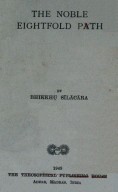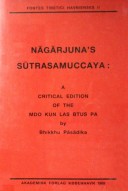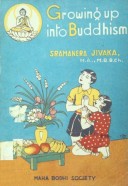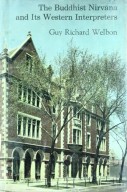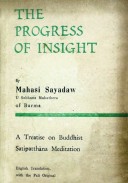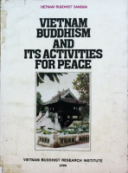Tìm Sách
Sách tiếng Anh-English >> Buddhist Devotion & Meditation
Thông tin tra cứu
- Tên sách : Buddhist Devotion & Meditation
- Tác giả : Pe Maung Tin
- Dịch giả :
- Ngôn ngữ : Anh
- Số trang : 89
- Nhà xuất bản : London S.P.C.K
- Năm xuất bản : 1964
- Phân loại : Sách tiếng Anh-English
- MCB : 1210000003580
- OPAC :
- Tóm tắt :
Buddhist Devotion & Meditation
An objective description and study
FOREWORD
When I know how a man prays, I am closer to understanding both him and the faith which he professes than ever before. I commend this small book by one who, himself a Christian, has been Professor of Pah at the University of Rangoon, and who has, I know, both respect and understanding for his Buddhist brethren. Even if the depths of the Christian masters of the prayer life are not to be found here, there is a latent nobility, which can only command admiration and affection for those who follow this path.
Rangoon, Victor Rangoon
March 1962
PREFACE
The aim of this little book is to bring together representative passages from the early Pali texts and the later Pali and Burmese literature to show what thoughts pass through the mind of a Burman Buddhist when he worships the Three Gems. The passages chosen either are connected with the Buddha and his Saints or have reference to some memorable event in the life of the worshipper. All the forms of worship except those of chs. 8, 18, and 20 occur in the popular Burmese books of worship and Paritta, such as those published by the Hanthawaddy Press and the Sarpay Beikman Press, Rangoon.
It is clear from the contents of this book that worship plays an important part in the religious life of the Burman Buddhist. The characteristic features of this worship may be noted. In the first eight chapters worship takes the form of pure devotion, where the worshipper is so absorbed in his devotions that he has no time to pray for anything. True worship involves the deliberate movement of the will towards, and the rapt contemplation of, the object of worship. One also pays homage to the Buddha by worshipping the main scenes of his life, his relics, and his marks of a Superman.
In the remaining chapters worship is accompanied by prayer. By prayer one asks for a desired result either by dwelling on it mentally or by expressing it vocally. The desired result can be obtained when one has done a good deed commensurate with one’s prayer.
The forms of worship with prayer include the Ratana Sutta which is recited as a charm to ward off danger; the effusion of loving kindness or mettã; and the solemn protestation of an act of truth.
Then there are the offerings of flowers, etc., whereby merit is gained and often shared. The Buddha does not enjoy the things offered to the shrine but that does not prevent merit from accruing to the giver. Better than any material gift, however, is the spiritual gift of homage paid by a believer who has duly carried out the Buddha’s instructions. Thus we see the nobility of life which the good Buddhist sets before himself; his hopes and means of obtaining this; the rare beauty of much of this devotion; and, above all, the greatness and inspiring power of the Buddha himself.
The Buddha does not claim to be God, or an incarnation of ‘ God. He does not regard himself as a saviour who will secure salvation for his followers by taking upon himself all their sins. He is just a guide and teacher who shows us the way by which the peace of Nirvana may be attained.
In Part Two, I give a short account of the system of Buddhist meditation, since meditation is so closely related to devotion.
My thanks are due to the Reverend T. O. Ling, Ph.D., for his kindness in reading the proofs and seeing the book through the Press.
Rangoon, PE MAUNG TIN
22 March 1962
CONTENT
Foreword
Preface
Part One: Buddhist Devotion
- The Great Honour
- The Attributes of the Three Gems
- For Victory
- Buddha-homage
- The Marks of the Superman
- The Letters of the Alphabet
- The Seven Scenes, the Eight Scenes, and the Nine Scenes
- The Buddhist Creed
- The Common Prayer
- The Perfect Buddhas
- The Law
- The Special Qualities of the Buddha
- The Seven Buddhas
- The Discourse on the Gems
- An Act of Truth
- Offerings of Almsfood, Water, Oil-lamps, and Flowers
- Transference of Merit
- A King’s Prayer
- The Shwe Dagon Pagoda
- A Monk’s Treasury of Devotions
Part Two: Buddhist Meditation
Index
 Facebook
Facebook
 Google
Google
 Google+
Google+


